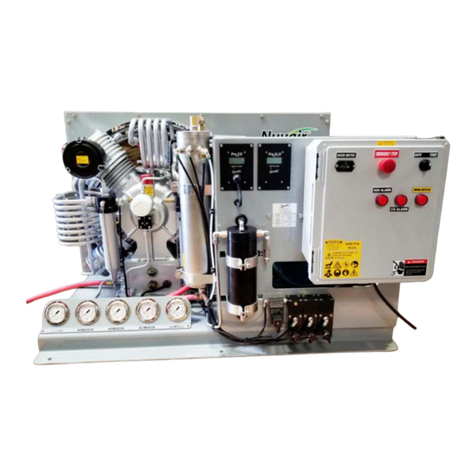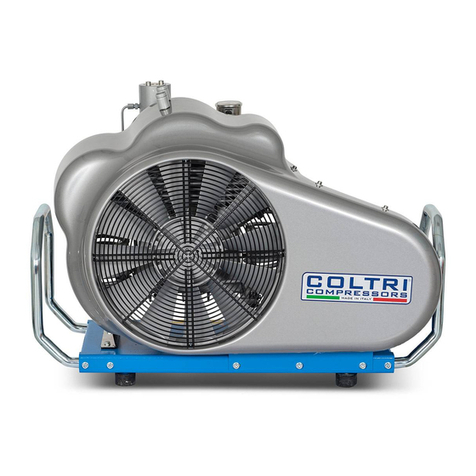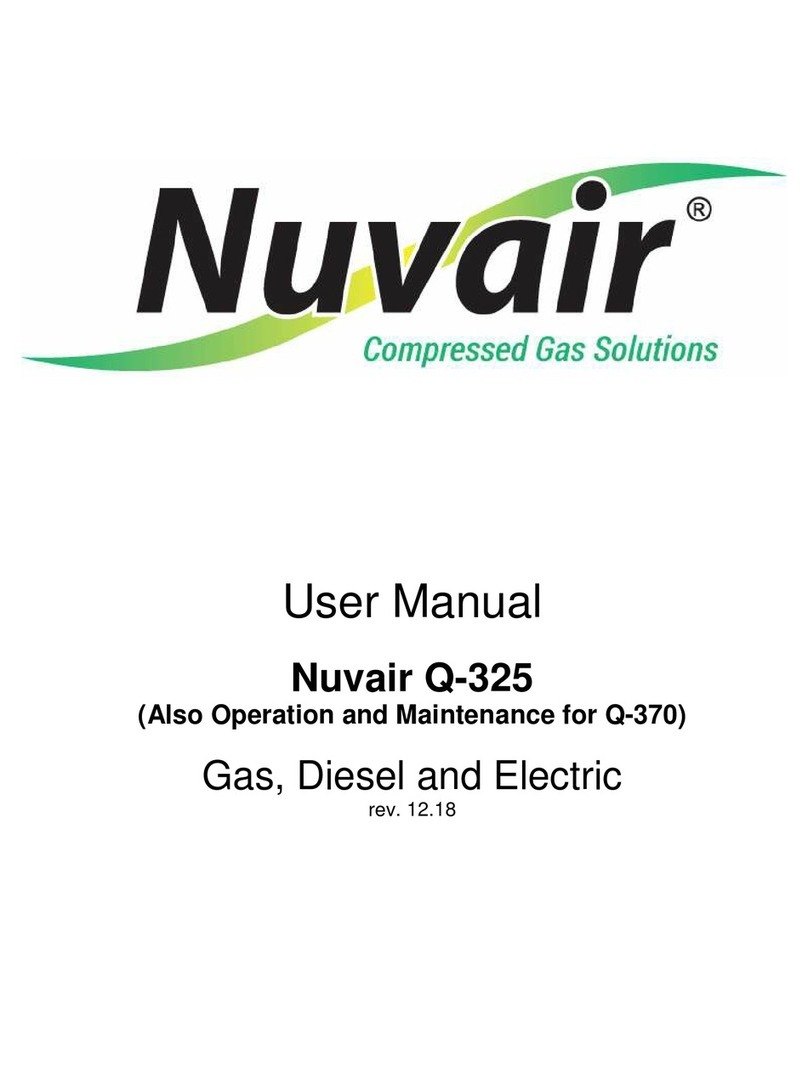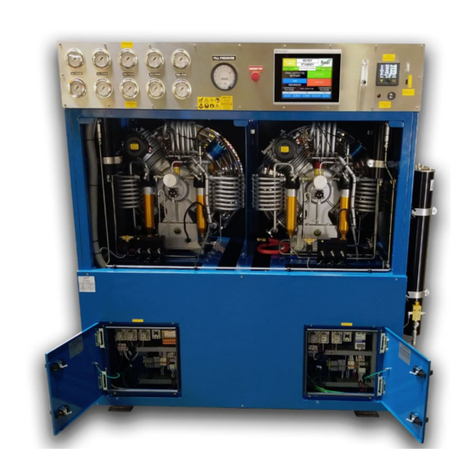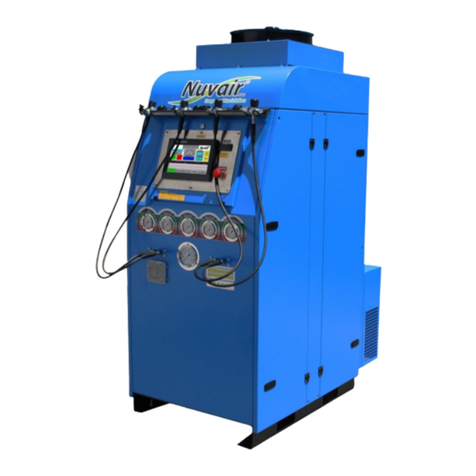
Nuvair Open Electric Models
Nuvair Page 3www.Nuvair.com
Table of Contents
Introduction
1.0 Introduction……………………………………………………………................................
1.1 Required Operator Training………………..……………..……………………….
1.2 Important Information for the User…………..……………..……………………..
1.3 Foreword……………..…………….………………………………………………...
1.4 Assistance ……………………………….…………………………………………..
1.5 Responsibility…………………………………...…………………………………...
1.6 Purpose of the Machine…………………………………………………………….
1.7 Where the Compressor may be used………………………………….................
1.8 Running and Testing the Compressor……………………………………………
2.0 Safety Warnings……………………………………………………………………………..
3.0 Safety and Operation Precautions…………………………………………………………
4.0 General Description of the Compressor…………………………………………………..
5.0 System Components………………………………………………………………………..
6.0 Compressor Specifications ………………………………………………………………..
6.1 Unpack and Installation……………………………………………………….………
6.2 Electrical Connection ……………………………………………………..………..…..
7.0 Checks to be run at the start of each working day ………………………………………
7.1 Lubricating oil check ………………………………………………….…………….
7.2 Check the refill hoses are in good condition ……………….……………………
7.3 Storing technical documentation…………………………………………………
8.0 Gauge Panel………………………………………………………………..………………..
9.0 Overpressure Safety Valves ……………………………………………..………………..
10.0 Bottle Refill ……………………………………………………………………..…….………
11.0 Maintenance …………………………………………………………………………..……..
11.1 Forward……………………………………………………………………….………
11.2 General…………………………………………………………………………..……
11.3 Unscheduled Work………………………………………………………....………
11.4 Scheduled Maintenance Table …………………………………………….……..
11.5 Troubleshooting ……………………………………………………………………
11.6 Checking and Changing the Lubricating Oil and Filter ………………………..
11.7 Checking the Oil Level……………………………………………………………..
11.8 Changing the Lubricating Oil and Filter …………………………………………
11.9 Tightening Torque Value ………………………………………………………….
11.10 CO and Moisture Indictor …………………………………………………………
11.11 Changing the Air Intake Filter ……………………………………………………
12.0 Transmission Belt ………………………………………………………………………….
12.1 Checking the Transmission Belt ………………………………………….……..
13.0 HP Compressor Filtration Active Carbon Filters / Molecular Sieve ………………….
13.1 Temperature effect on filter life ……………………………………………………
13.2 Condensate Discharge …………………………………………………………….
14.0 Power Requirements ……………………………………………………………………….
5
5
6
6
6
7
9
9
10
11
12
15
16
16
17
17
17
17
17
18
18
19
20
20
20
20
20
21
21
22
23
24
24
25
25
25
26
27
27
28

